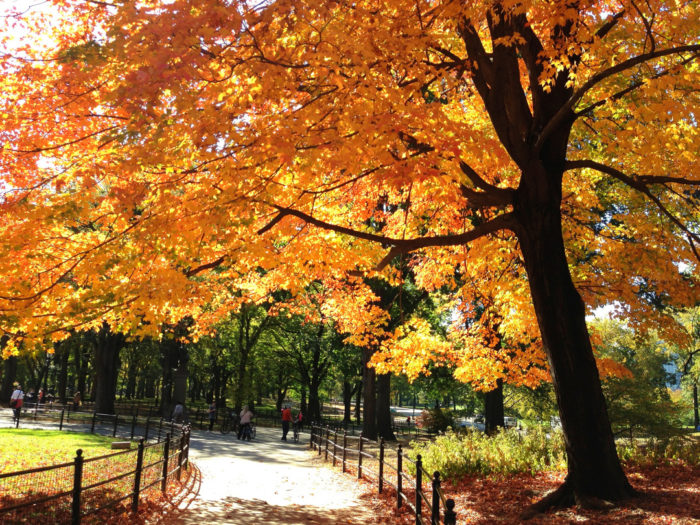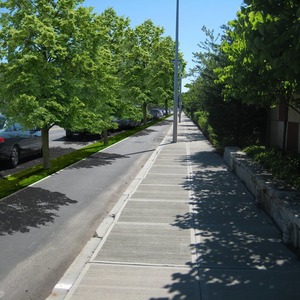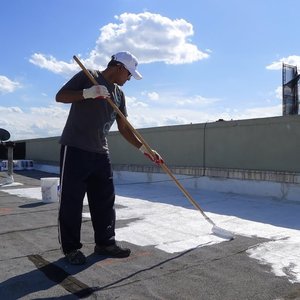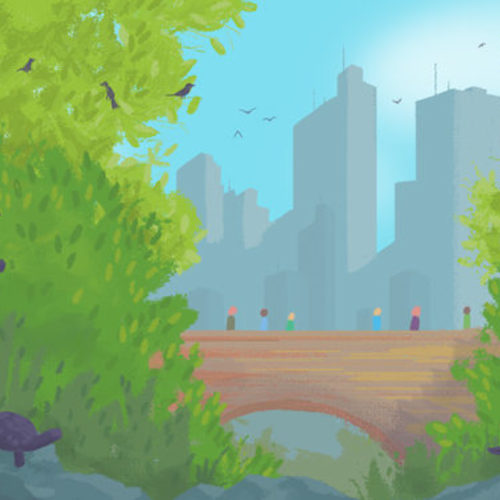
Image Credit: Young Sok Yun via Flickr
Megacities are on the rise. There are currently 47 such areas around the globe, each housing more than 10 million residents.
More than half the global population now lives in urban areas, comprising about 3% of the Earth. The ecological footprint of this growth is vast and there’s far more that can be done to improve life for urban residents around the world.
When it comes to natural spaces, trees are keystone species in the urban ecosystem, providing a number of services that benefit people. My research team has calculated just how much a tree matters for many urban areas, particularly megacities. Trees clean the air and water, reduce stormwater floods, improve building energy use and mitigate climate change, among other things.
For every dollar invested in planting, cities see an average $2.25 return on their investment each year.
Measuring trees
Our team, led by Dr. David Nowak of the USDA Forest Service and Scott Maco of Davey Institute, develops the tree benefits software i-Tree Tools.
These tools simulate the relationship between trees and ecosystem services they provide. These services can include food, clean air and water, climate and flood control, pollination, recreation, and noise damping. We currently don’t simulate many services, so our calculations actually underestimate the value of urban trees.
Our software can simulate how a tree’s structure — such as height, canopy size, and leaf area — affects the services it provides. It can estimate how trees will reduce water flooding; or explore how trees will affect air quality, building energy use, and air pollution levels in their community. It can also allow users to inventory trees in their own area.
Our systematic aerial surveys of 35 megacities suggest that 20% of the average megacity’s urban core is covered by forest canopy. But this can vary greatly. Trees cover just 1% of Lima, Peru, versus 36% in New York City.
We wanted to determine how much trees contribute to human well-being in the places where humans are most concentrated, and nature perhaps most distant. In addition, we wanted to calculate how many additional trees could be planted in each megacity to improve the quality of life.
How tree density affects a city
We looked in detail at 10 megacities around the world, including Beijing, Cairo, Mexico City, Los Angeles, and London. These megacities are distributed across five continents and represent different natural habitats. Cairo was the smallest, at 1,173 square kilometers, while Tokyo measured in at a whopping 18,720.
For most cities, we looked at Google Maps aerial imagery, randomly selecting 500 points and classifying each as tree canopy, grass, shrub, and so on.
We calculated that tree cover was linked to significant cost savings. Each square kilometer saved about $0.93 million in air pollution health care costs, $20,000 by capturing water runoff, and $478,000 in building energy heating and cooling savings.
What’s more, the median annual value of carbon dioxide sequestered by megacity tree cover was $7.9 million. That comes out to about $17,000 per square kilometer. The total CO2 stored was valued at $242 million, using a measure called the social cost of carbon.
The sum of all annual services provided by the megacity trees had a median annual value of $505 million. That provides a median value of $967,000 per square kilometer of tree cover.
Trees in your city
An entire urban forest can provide services for a good life.
All of the cities we studied had the potential to add additional trees, with about 18 percent of the metropolitan area on average available. Potential spots included areas with sidewalks, parking lots and plaza areas. The tree’s canopy could extend above the human-occupied area, with the trunk positioned to allow for pedestrian passage or parking.
Want to conserve forests and plant more trees in your area? Everyone can take action. City and regional planners can continue to incorporate the planning for urban forests. Those who are elected to office can continue to share a vision that the urban forest is an important part of the community, and they can advocate and support groups that are looking to increase it.
Individuals who cannot plant a tree might add a potted shrub, which is smaller than a tree but has a leafy canopy that can contribute similar benefits. For the property owner wanting to take charge, our i-Tree software can assist with selecting a tree type and location. A local arborist or urban forester could also help.
Theodore Endreny is a professor in the Department of Environmental Resources Engineering at the State University of New York College of Environmental Science and Forestry. This post originally appeared at The Conversation.
Weekly Newsletter
Get building science and energy efficiency advice, plus special offers, in your inbox.















4 Comments
Caveats.
A majority of trees planted in urban areas are of the flowering variety which consequently contribute heavily to pollen counts and by extension respiratory issues.
Cities have trouble meeting their air quality standards because many of the trees themselves emit
biogenic VOCs. Ironic I know.
i-Tree Tools Link
Clicked on the i-Tree tools link in the article and it sent me to a dead page. Looks like a small typo in the link is the culprit (left the "s" off of "tools"). If anyone does want to get to the i-Tree tools, here is the website: http://www.itreetools.org/. Thanks!
Response to Jamie Hager
Jamie,
Thanks for your comments. I have corrected the erroneous link in the article. We appreciate the correction.
Don’t Lose Forest for the Trees
Fantastic tools — thank you! In any discussion about urban tree canopy I just have to bring up the notion that increasing density in urban areas saves trees in exurban areas. Here in Seattle people who are against growth in the city are using tree canopy as a weapon against increasing density. These things do not need to be mutually exclusive. If we were willing to let go of some amount of street parking for example, “parking strips” could be widened and additional trees planted, especially in single-family zoned areas. Likewise housing typologies like row houses (see Brooklyn) and courtyard blocks of apartments (see Barcelona) point to ways that tree canopy and density can coexist. Also worthwhile to factor in the reduced carbon emissions of dense urban areas primarily due to reduced automobile use. The pollution that trees are filtering out comes in no small measure from the particulates of combustion. Dense, walkable urban areas are healthier too. Adding trees to them will make them even better.
Log in or create an account to post a comment.
Sign up Log in